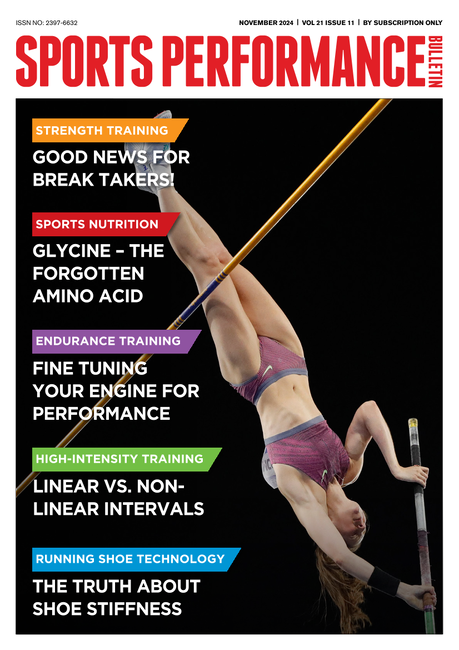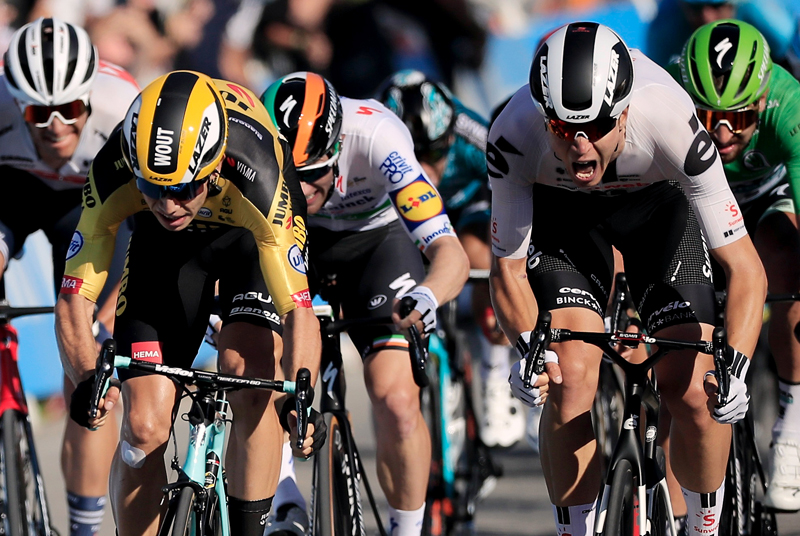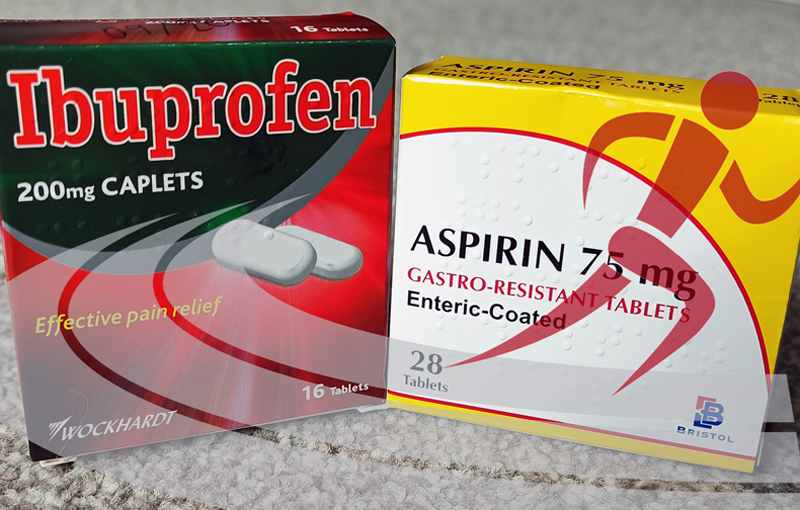You are viewing 1 of your 1 free articles. For unlimited access take a risk-free trial
Anaerobic training
If you're a 5K runner, don't neglect the crucial 7%
About 93 per cent of the energy you need to run a 5K race is supplied 'aerobically' (through the use of oxygen), and only 7 per cent is furnished oxygen-independently, or 'anaerobically'. This huge imbalance might make you think that the development of anaerobic power is not very important before your 5K races (and even less of a factor for 1OKs). After all, a few sporadic high-intensity workouts, slipped casually into your overall training schedule, should develop your anaerobic system enough so it can chip in 7 per cent of your 5K calories. Figuring that you consume 120 calories per mile as you run, your anaerobic system needs to come up with just 26 calories over a whole 5K race - about the number of calories in a couple of small bites of banana. Surely such a paltry energy sum would not make much of a difference in 5K times! The key to top 5K racing has to be aerobic development.TTE was calculated in this way. A stopwatch started as an athlete began running on a flat treadmill at an intensity of 85% V02max (about 92 per cent of maximal heart rate). The treadmill grade increased by 3 per cent every two minutes, and the clock stopped when the runner could no longer continue. TTE was simply the total time an athlete could last on the treadmill and represented a runner' s endurance capacity during high-quality running.
After the physiological tests were completed, Houmard and Costill statistically created a 'stepwise regression equation' to determine which variables were most important for 5K performance. Since oxygen accounts for 93 per cent of the energy expended during a 5K, you might expect that V02max (maximal aerobic capacity) would have been a key element in the mathematical formula, but guess which 'essential' variable was missing? V02max 'stayed home', and the two key predictive factors turned out to be TTE and anaerobic power. The longer the TTE and the greater the anaerobic power, the faster the 5K time.
Although the anaerobic system's 7 per cent energy contribution during a 5K seems small at first glance, it's clear from the Houmard-Costill analysis that it can play a crucial role in 5K racing, especially when you consider that anaerobic power is of greatest value during the final half- to quarter-mile of the race, when runners charge towards the finish like stampeding buffaloes. That's not the only time that the anaerobic system kicks in, however. Since the 5K is usually completed at an intensity of 95% V02max, well above lactate threshold, there's a small but steady stream of anaerobic energy utilisation throughout the race. As Houmard and Costill concluded conservatively: '...middle-distance runners should utilize training which develops their anaerobic systems'.
Try these four workouts
What form of anaerobic training would be best for 5K racers? These question hasn't been evaluated scientifically but the following workouts make a lot of sense. The basic philosophy underlying these sessions is that you're not trying to 'max out' your anaerobic system, as would runners like Linford Christie or Carl Lewis. Instead, you're simply trying to get better at creating some energy anaerobically during race efforts which are primarily aerobic. Here are four workouts to help you:
(I) Use the distance runner's best friend - the 1200m interval - in the following way. Calculate the maximum number of 1 200m intervals you can do per workout by multiplying your weekly mileage by 10 per cent. For example, if you run 40 miles per week, 10% X 40 = 4 miles, or about 6400 metres. You can complete five 1200m intervals per workout (5 X 1200 = 6000). Warm up by jogging for 10-15 minutes on the track, and then run three 1 200m intervals at your current 5K race pace, with recoveries that are equal in time duration, or slightly shorter, than the work intervals. For the last two intervals of the workout, run the first 800m of each interval at 5K pace, but sizzle through the last 400m of the interval at 2 seconds per 400 faster than 5K pace. Overall, this will give you 800m per workout of more-anaerobic running, preparing you for 800m charges at the ends of your 5K competitions. It's okay to use a slightly longer recovery between the last two 1200m intervals. If your mileage dictates that you can only do four 1200m intervals, use a 2-2 system (the first two intervals are strictly at SK pace; the last two have the faster-than-5K flare at the end).
(2) On a road or in a park, mark off a three-quarter mile distance. Arrange it so that the last 100-400 yards (metres) of this distance are moderately uphill. Then, conduct intervals over this three-quarter mile stretch, trying to maintain close to SK pace throughout, even on the last uphill section. Use recoveries that are equal to, or slightly longer than, each work interval, and use the 10 per cent formula to calculate the maximum number of intervals per workout.
(3) The variable-recovery session. Complete 400m work intervals at a pace three seconds per 400 faster than SK tempo. After the first work interval, recover for only as long as the duration of the work interval. After the second work interval, recover for six to eight minutes. Continue in this way, alternating equal-duration recoveries with six- to eight-minute recoveries, until you are tired or you reach the 10 per cent limit.
(4) The workout favoured by Joe Houmard himself. Warm up by jogging two miles or so on the track, and then complete 3 X 300 metres with a 100m jog after each 300. Try to do each 300 at fairly close to all-out intensity but still with a sense of control. You shouldn't be scratching, scraping, leaning or losing your basic running form. Don't try to time the 300s, but they should definitely feel faster than SK tempo. For your fourth interval, after you've completed the three 300-100 combos, run a full 400 at a pace about 5 seconds per 400 faster than current SK speed. This ends the first set, which adds up to about one mile of running. Walk 400m to recover, and then carry out a second, similar set. Depending on your current mileage levels and the 10 per cent rule, you can try a third or even a fourth set. After the basic workout is over, warm down by jogging easily for one mile. As Houmard points out, the faster-than-SK nature of this session ensures good anaerobic development. 'Also, the fuller recovery between sets allows a runner to maintain speed over the duration of the workout', he says.
Fitting six of these workouts, in any combination, into a four week period which ends one week before an important SK should have a measurable effect on your SK performance. During the final week of preparation, simply taper as described in the May issue of PEAK PERFORMANCE.
Owen Anderson
Newsletter Sign Up
Testimonials
Dr. Alexandra Fandetti-Robin, Back & Body Chiropractic
Elspeth Cowell MSCh DpodM SRCh HCPC reg
William Hunter, Nuffield Health
Newsletter Sign Up
Coaches Testimonials
Dr. Alexandra Fandetti-Robin, Back & Body Chiropractic
Elspeth Cowell MSCh DpodM SRCh HCPC reg
William Hunter, Nuffield Health
Keep up with latest sports science research and apply it to maximize performance
Today you have the chance to join a group of athletes, and sports coaches/trainers who all have something special in common...
They use the latest research to improve performance for themselves and their clients - both athletes and sports teams - with help from global specialists in the fields of sports science, sports medicine and sports psychology.
They do this by reading Sports Performance Bulletin, an easy-to-digest but serious-minded journal dedicated to high performance sports. SPB offers a wealth of information and insight into the latest research, in an easily-accessible and understood format, along with a wealth of practical recommendations.
*includes 3 coaching manuals
Get Inspired
All the latest techniques and approaches
Sports Performance Bulletin helps dedicated endurance athletes improve their performance. Sense-checking the latest sports science research, and sourcing evidence and case studies to support findings, Sports Performance Bulletin turns proven insights into easily digestible practical advice. Supporting athletes, coaches and professionals who wish to ensure their guidance and programmes are kept right up to date and based on credible science.









